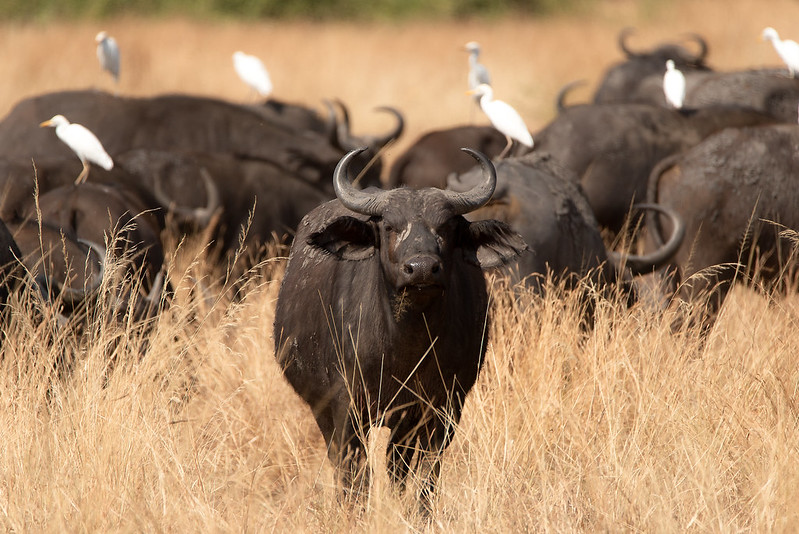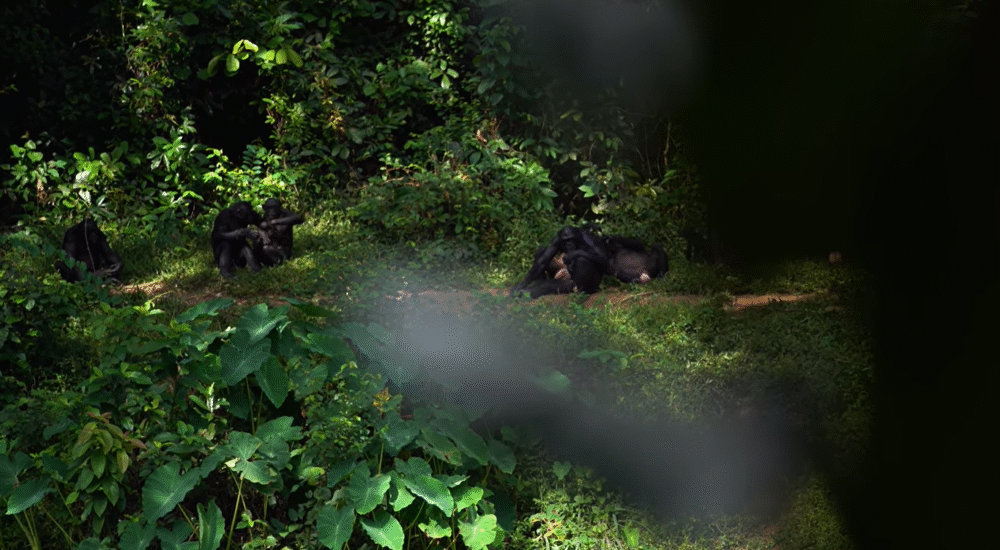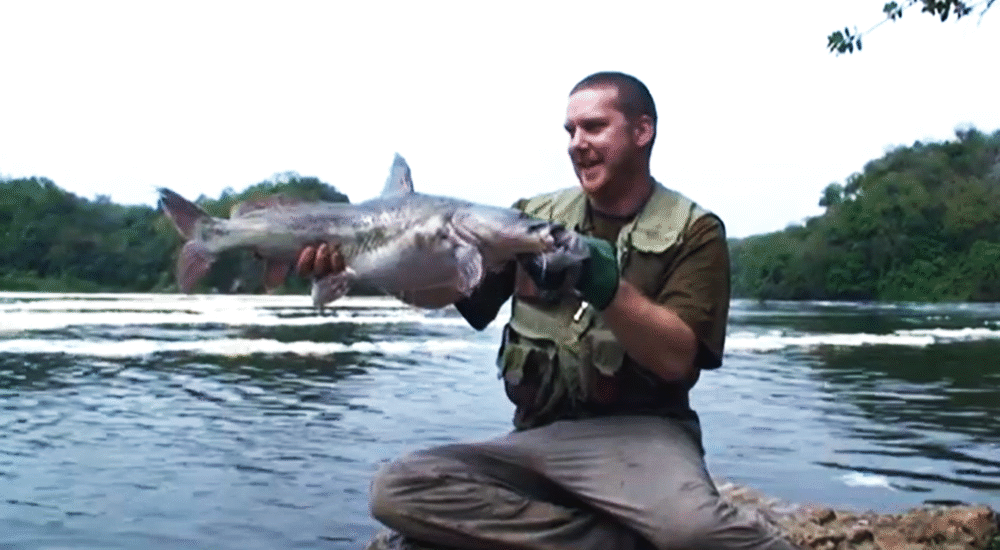Uganda safaris booking-gorilla adventure booking information. Safaris in Uganda: Book Now! There are a lot…
Toro Semliki Wildlife Reserve
Toro Semliki Wildlife Reserve, Semliki is less busy than other sights because it is not on the main road. Because it is far away, you can enjoy the animals in the area without being bothered by the noise of other safari cars. There are rainforests, dry savannah fields, and riparian woodlands in the reserve, as well as stunning views of the Rwenzori Mountains and the Blue Mountains of the Congo in the distance. The beautiful green wetlands along the Semliki River go all the way to Lake Albert.
This is a great place for a boat tour early in the morning. In 1926, Uganda’s Toro Semliki Wildlife Reserve was made a game reserve. It was one of the first protected places to be given a gazette. Their main goal was to keep the many Uganda Kobs that lived in the area safe.
There are 542 square kilometers of the Toro Semliki Wildlife Reserve in Uganda. It is in the western part of the country, in the Ntoroko and Kabarole districts. Birdwatchers are the main people who visit the Semliki Valley. The area has a great list of things to see, including many birding specials. The hot springs at Sempaya and the Pygmy town in the nearby Semliki National Park are also interesting places to visit. As the only lodge in the reserve, it gives a very private experience of the bush with activities led by experts.
The Toro Semliki Wildlife Reserve is in a beautiful rift valley that cuts through the Rwenzori Mountains, the Kijura cliffs, and Lake Albert. Open acacia-combretum woodland and grassy grassland make up most of the plants. There are also patches of Borassus palm forest, large riparian woodland belts along the main watercourses, and some huge wetlands around Lake Albert.
It’s a beautiful place to be on a clear day, with the rift valley cliffs rising sharply from the eastern shore of Lake Albert, the 2500m-high Congolese Blue Mountains in the west, and the huge Rwenzori glacial peaks in the southwest.
Toro Semliki Wildlife Reserve has a lot of wildlife.
Like Murchison Falls National Park, which is near the northern end of Lake Albert, the Toro Semliki plain is mostly grassy grassland and acacia-combretum forest. There are stands of Borassus palms, wetlands along the shore, and big river valleys with beautiful galley woodland all over them. Lake Albert is not in the reserve, but it is possible to get there by boat and watch birds. You don’t see elephants and cows very often.
Leopards are sometimes seen on night game drives, but lions are more often heard than seen. The main animals that live in Toro-semliki National Park are the same ones that live in Queen Elizabeth and Murchison Falls National Parks. These are hippos, elephants, buffalo, the Uganda Kob, waterbuck, warthogs, and giant forest hogs.
Primates are monkeys like the Vervet, Red-tailed, and Black and White Colobus, as well as chimpanzees and baboons. The Elephant population is one of a kind because it includes both savannah and jungle Elephants, as well as a hybrid type that was created when two types of elephants bred. Scientists from the University of Indiana have been studying chimps in the bush along the Mugiri River, close to the Semliki Safari Lodge. You might see chimpanzees while on a monkey walk.
Toro-Semliki Wildlife Reserve has many kinds of birds.
The Toro-Semliki Animal Reserve might not be the best spot to see animals, but it is a great place to watch birds. It has about 460 species that have been found in different places. You can see the hard-to-find shoebill and a nesting colony of the beautiful red-throated bee-eater on Lake Albert boat trips. The close Semuliki National Park is a great place to add different Congolese rainforest species. Birds that migrate are here from November to April.
The birds that live there are the Arrow-marked Babbler, the Tropical Boubal, the Black-headed Bushrike, the Luhdrers Bushrike, the Red-necked Falcon, the Black-billed Barbet, the Tropical Boubal, and the Abyssinian Ground-hornbill. The Shoebill can often be seen in the marshy areas around Lake Albert.
Types of Trees
The Toro-Semliki area is a mix of forest and farmland, with a variety of plant and animal habitats. The Wasa and Mugiri rivers, along with many of their branches, support gallery trees that are 30 to 50 meters tall and 50 to 250 meters wide inside the reserve. Most of the time, Ugandan ironwood, Millettia dura, and Kigelia africana are the main canopy riverine tree species.
The understory is mostly made up of Beilschmiedia ugandensis, which is the most common tree in riverine woods. As people move farther away from water sources, the trees get smaller. Sometimes, open-habitat species like Acacia, Albizia, and bushy plants take over slowly, but most of the time, the change from forest to grassland happens quickly.
Scenery or landscape.
In the Albertine Rift Valley reserve, the Rift Valley cliffs are to the east, the Congolese Blue Mountains are to the west, and the Rwenzoris are to the southwest. The main types of vegetation are woodland and grassland. Several rivers flow through the area, which is surrounded by riverine forest and has splotches of borassus palms.
Communities Close By
Community of Karugutu-Kyabandara.
This town is in the south of the reserve, about 18 kilometers south of Fort Portal. Most of the people who live in the area are Bakonjo, who are native farmers. The main foods that are grown are maize, cassava, beans, soy beans, rice, and bananas. Some of these are sold in the Rwebisengo and Ntoroko markets.
Community of Webisengo in the Toro Semliki Wildlife Reserve
The Semliki Flats are on the western and northern edges of the area. There are a lot of herders among the Batuku (Batoro-Bahuma), who make up the majority of the group. People think that the Batuku are related to the Abarusula, who were the royal army of King Kabalega’s Bunyoro Kitara Kingdom.
The fishing community of Ntoroko
This village is near the southernmost point of the lake, where the Wasa and Muzizi rivers meet. The about 4km2 area was taken out of the reserve and made a species sanctuary to protect any animals that might contact with humans in this area. The Ntoroko people depend on fishing for most of their income.
Community of Kasesenge-Kyakabaseke
This town is on the eastern edge of the rift valley. Most of them are Bakiga people who came to work on tea farms in the 1960s. When the economy was good, tea was a steady source of cash. When the price of tea went down, they started growing crops, mostly bananas, beans, and groundnuts.
What should you do when you go to Uganda’s Toro Semliki Wildlife Reserve?
Scientists are especially interested in the chimpanzees that live in Toro Semliki Wildlife Reserve because they live in a drier area than the chimpanzees that live in Kibale, Budongo, or Kyambura. This means they have to walk farther to get food, and they have been seen walking on their back legs for short lengths. With the help of a knowledgeable guide, you will walk for three to four hours through savannah fields, tree forests, and riparian and acacia forests.
You can go on a primate walk with the experts, but don’t expect to see chimps because they can move quickly and far, and they aren’t as used to being around people as chimps are in more common areas. Instead, it’s a chance to enjoy beautiful scenery while learning more about an interesting species. There are, however, many other ape species that live in Semliki. You may see red-tailed, vervet, black and white colobus, and baboons on your trip.
Go on a hike to Nyaburogo Gorge
The Reserve Headquarters is the start of this great birding walk. A 7-kilometer path takes you through farmland, woodland, and canyon forest, among other places. Arrow-marked Babbler, Tropical Boubal, Black-headed Bushrike, and Luhdrers Bushrike are some of the birds that can be seen often. Primates like Black and White Colobus, Baboons, vervets, and sometimes Chimpanzees can also be seen.
Tours by boat on Lake Albert
A boat tour across the Lake Albert delta at sunrise or sunset is an experience you will never forget. You might even see the cute and very rare shoebill stork, which hides in the weeds and reeds along the marshy shores if you’re lucky. The best time for a boat tour is in the morning, and Semliki tour Lodge offers it.
Safaris with Game Drives
There are game drives in Semliki that are run by the Uganda Wildlife Authority or the Semliki Safari Lodge. They leave in the morning and late afternoon, and there are three different routes that go through different parts of the area. You can also go on night game drives. You can often see buffalo, waterbuck, crocodiles, warthogs, and Uganda kobs, as well as small forest elephants and huge grassland elephants.
Cultural tours for the community
Batwa homesteads are open to tourists on culture tours or community visits right outside the national park. In these places, tourists can meet the locals, learn about their history, and watch traditional dance acts.
The Karugutu Community Conservation Association (KCCA) is a non-profit group that uses music, dance, and drama to teach people about conservation. People who come to the area can watch traditional dances and buy their crafts at a shop at the entrance. Members of the KCCA put on shows for guests.
Take a trip to Sempaya Hot Springs.
The temperature of these amazing springs can reach up to 100 degrees Celsius (212 degrees Fahrenheit). The force, strength, and heat of these springs show how strong the forces are below.
Go to Pygmy Village.
Learn about the Pygmy people’s unique habits, culture, and way of life as hunters and gatherers who have lived in a deep forest for hundreds of years. This forest is part of the huge Ituri Forest, which goes into the Democratic Republic of the Congo.
Costs to get into Toro Semliki Wildlife Reserve
Adults from outside of the US must pay USD $35 to get in. You can drive or walk along the main road to Bundibugyo, which is just outside the southeast border of the park, or you can stay the night at Bumaga Visitor Camp for free. Visitors to both Semliki National Park and Toro-Semliki Wildlife Reserve must pay two separate entry fees, even if they do so within the same 24 hours. This is because the two parks are separate entities.
What the weather is like in Toro Semliki Wildlife Reserve
The weather in Toro-Semliki Wildlife Reserve is very hot. It looks like these high temperatures will last all year. The temperature during the day is about 30°C (86°F), and at night it is about 18°C (64°F). Toro-Semliki doesn’t really have a dry season, so rain can come at any time. But the wet season is split into two different parts: March to May and August to November.
Where can I stay in Uganda’s Toro Semliki Wildlife Reserve?
Camping in the Kalinzu Forest
UWA runs a campground and cheap Bandas on the shores of Lake Albert near Ntoroko. These must be booked ahead of time. The restaurant at the campsite is where meals are made. At Karugutu, where the reserve offices are, there is another campground.
Lodge on Semliki Safari
Semliki Safari Lodge is run by a private concessionaire. A high-end camping camp is run by the Uganda Safari Company. Antique jungle furniture and tents with golden colors take you back to a time when adventure was common and make you feel like you’ve gone back in time. With only 8 tents, Semliki gives guests a quiet and private time.
Visitors can enjoy the highest level of comfort and style with hardwood floors, double beds, private verandas, en-suite bathrooms with hot showers and running toilets, and thatched roofs that protect the rooms. There are big dining tables, deep-seated armchairs, and a warm fire in the center lodge area, which is a great place to relax and share stories at the end of the day.
The lodge at Aramaga Rift Valley
On clear days, the Aramaga Rift Valley Lodge has a view of the beautiful Great Rift Valley in east Africa, as well as the Rwenzori Mountains, the Toro-Semliki Wildlife Reserve, the Blue Mountains in the Congo, and the edge of Lake Albert. The rooms are beautiful private pods, and each one has a 180-degree glass window so that guests don’t miss anything.
The six space-themed pods—Moonshot, Starship, Galactic, Orbit, Supernova, and Gravity—were each designed to take advantage of the area’s beautiful views and natural curves to offer private experiences with a laid-back approach to luxury.
When is the best time to go to Toro Semliki Wildlife Reserve?
It’s important to know the best time to visit Uganda because it affects where to stay, how much flights cost, how many seats are available, and the weather that safari tourists can expect. Toro-Semliki has a hot climate, and it rains all the time.
Temperatures drop by half at night. Even though it rains a lot, the two wet seasons (March to May and August to November) don’t help much with the heat. In fact, from March to May, the roads get washed away. When it’s dry, like from December to February or June to July, you’ll get a little less wet.
The best time to see animals in Semliki Animal Reserve is during the dry season, which lasts from December to February and June to September. During these months, it rarely rains and there is a lot of sunshine. Animals tend to gather around normal water sources, which makes seeing them easier.
If you like to watch birds from January to March, when it is clearer and brighter, bring your binoculars. The middle of the year, from June to July, is also a great time to go monkey climbing. Rain, rain, and more rain for the rest of the year, so bring lots of clothes that can get wet. During the rainier months, some paths can’t be used after it rains a lot.
How to Get to the Wildlife Reserve of Toro Semliki
By going through Mubende, the distance between Kampala and Fort Portal is 290 kilometers. If you go through Masaka, Mbarara, and Kasese, it’s about 465 kilometers. Take the Semuliki National Park road out of Fort Portal for the first 28 kilometers. At the Karugutu trade town, turn right. Three kilometers further on is the edge of the reserve.
Twenty-six kilometers further on, right after the river bridge, is the turnoff to Semliki Safari Lodge. To get to the Lodge, which is 3 km away, take the right turn. Lake Albert is 25 kilometers away in the fishing town of Ntoroko. UWA runs a campground, bandas, and a restaurant there.
The Toro Semliki Wildlife Reserve has an airport that is managed by UWA. Guests can rent planes and land at the Semliki Safari Lodge, which is close to the airfield. From Entebbe International Airport or Kajjansi Airfield, both of which are close to Kampala, Aerolink and Bar Aviation offer regular and charter trips.


